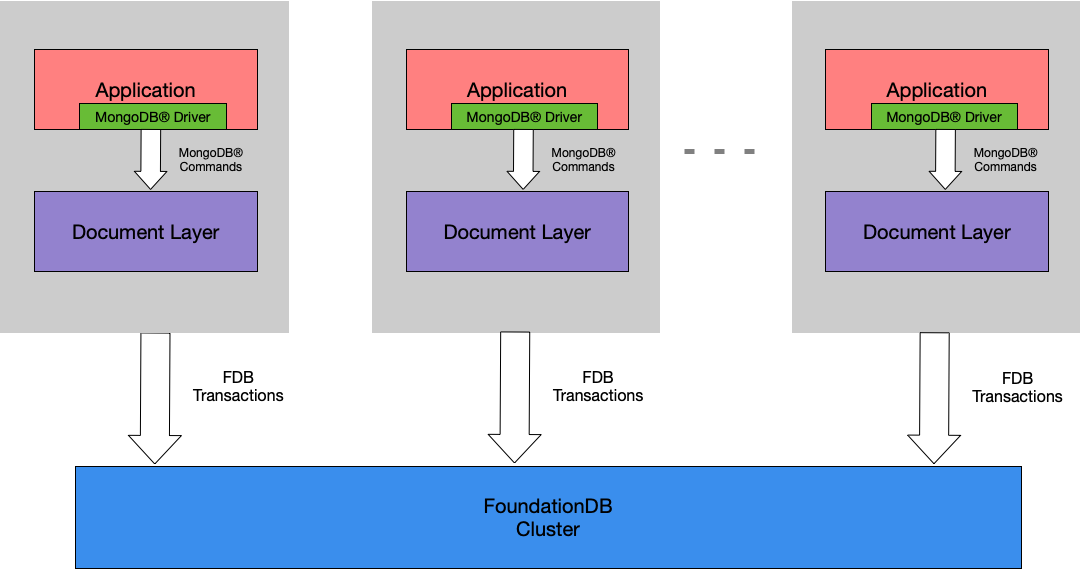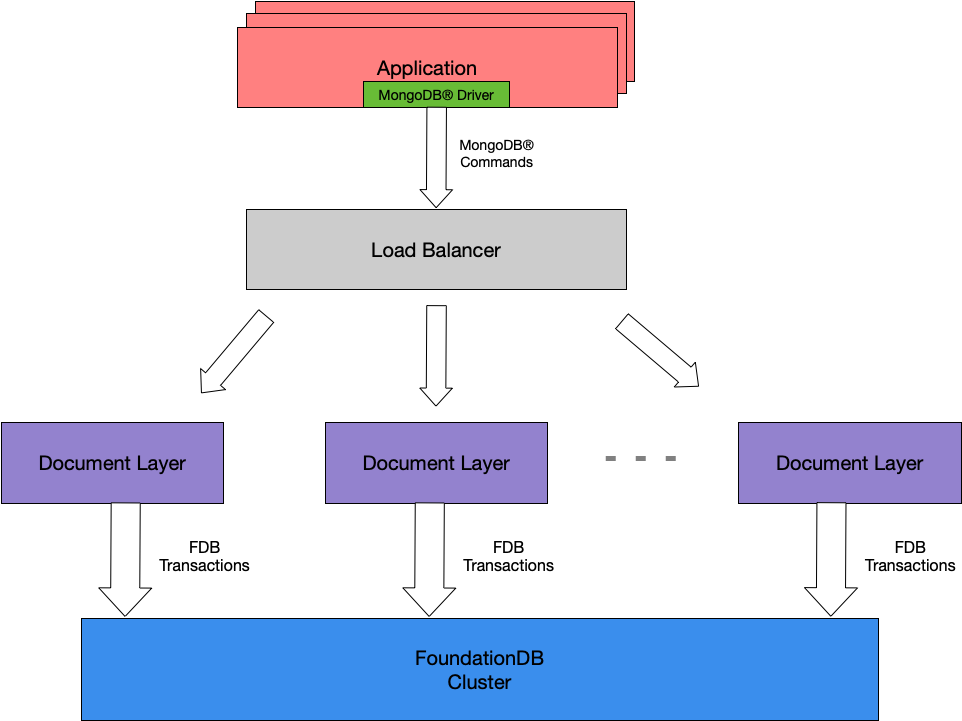Architecture
The Document Layer is a stateless microserver backed by the FoundationDB Key-Value Store. All the persistent state (documents, indexes, metadata, etc.) are stored in the Key-Value Store. The Document Layer together with the FoundationDB Key-Value store form a scalable and fault-tolerant document database. In the traditional database nomenclature, the Document Layer is the query engine and the Key-Value Store is the storage engine.
Since the Document Layer is stateless, scalability and fault-tolerance can be provided by running multiple instances. As FoundationDB is scalable and fault-tolerant, this results in horizontally scallable and fault-tolerant architecture.
Deployment Models
The Document Layer can be deployed either as a sidecar or an instance pool.
Sidecar
The Document Layer instance runs on the same host as the application instance. Each application instance is coupled with the local Document Layer instance and only connects to it. This makes both security and service discovery easy.
Application deployment needs to make sure, the Document Layer instances start and stop together with application instances. Also, FoundationDB C libraries need to installed on application instances and updated on FoundationDB server upgrades.

Instance pool with Load balancer
The Document Layer instances are maintained as a service separate from application. Applications connect to the Document Layer instances through a load balancer which rotates new connections through the Document Layer instances. Application deployment need not do anything special for either the Document Layer or FoundationDB.
As the application sees the instance pool through load balancer, reconnection to the same IP could go to different instance. This makes it hard to depend on any server state.
Note: Cursors work properly as cursor requests come with an ID, which is used to fail the request that went to wrong server.

Architectural advantages
Here is a selection of fundamental design advantages of Document Layer over MongoDB®.
No write locks
The Document Layer does not implement locks on the database for write operations. The Key-Value Store uses optimistic concurrency control instead of locking. In some cases, operations may have to retry due to conflicts; non-conflicting operations, including metadata operations, can always proceed in parallel on the same instance.
No sharding
The Document Layer does not rely on sharding with a fixed shard key to distribute data. Instead, all data partitioning and rebalancing is handled automatically by the Key-Value Store and is transparent to the client application. This approach provides robust horizontal scalability while avoiding the client-level complexity.
Memory management
Both the Document Layer and the Key-Value Store have predictable memory usage.
No config servers or mongos routers
There are no config servers or mongos routers. Cluster topology remains
uniform as the overall application deployment changes.
Safe behavior
By default, write operations on the Document Layer execute with document-level isolation and atomicity. Unsuccessful operations are reported to the client, rather than failing silently after execution. Indexes are always consistent with inserts and updates as they are written together in a FoundationDB transaction. Write concern and Read preference do not matter as writes are fully consistent irrespective of write concern. Reads always see causal consistency.
No table compaction
The Document Layer does not need to perform offline table compaction, which incurs unnecessary overhead.